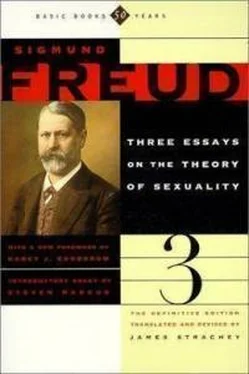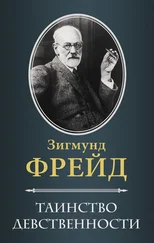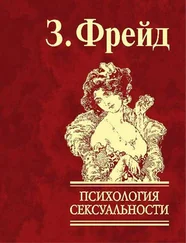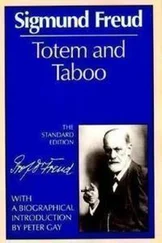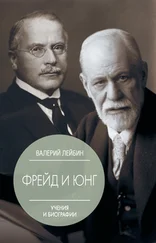Gamma. In a pronounced case of psychoneurosis we seldom find the development of one single perverted impulse; usually there are many and regularly there are traces of all perversions. The individual impulse, however, on account of its intensity, is independent of the development of the others, but the study of the positive perversions gives us the accurate counterpart to it.
PARTIAL IMPULSES AND EROGENOUS ZONES
Keeping in mind what we have learned from the examination of the positive and negative perversions, it becomes quite obvious that they can be referred to a number of "partial impulses," which are not, however, primary but are subject to further analysis. By an "impulse" we can understand in the first place nothing but the psychic representative of a continually flowing internal somatic source of excitement, in contradistinction to the "stimulus" which is produced by isolated excitements coming from without. The impulse is thus one of the concepts marking the limits between the psychic and the physical. The simplest and most obvious assumption concerning the nature of the impulses would be that in themselves they possess no quality but are only taken into account as a measure of the demand for effort in the psychic life. What distinguishes the impulses from one another and furnishes them with specific attributes is their relation to their somatic sources and to their aims . The source of the impulse is an exciting process in an organ, and the immediate aim of the impulse lies in the elimination of this organic stimulus.
Another preliminary assumption in the theory of the impulse which we cannot relinquish, states that the bodily organs furnish two kinds of excitements which are determined by differences of a chemical nature. One of these forms of excitement we designate as the specifically sexual and the concerned organ as the erogenous zone , while the sexual element emanating from it is the partial impulse. [32]
In the perversions which claim sexual significance for the oral cavity and the anal opening the part played by the erogenous zone is quite obvious. It behaves in every way like a part of the sexual apparatus. In hysteria these parts of the body, as well as the tracts of mucous membrane proceeding from them, become the seat of new sensations and innervating changes in a manner similar to the real genitals when under the excitement of normal sexual processes.
The significance of the erogenous zones in the psychoneuroses, as additional apparatus and substitutes for the genitals, appears to be most prominent in hysteria though that does not signify that it is of lesser validity in the other morbid forms. It is not so recognizable in compulsion neurosis and paranoia because here the symptom formation takes place in regions of the psychic apparatus which lie at a great distance from the central locations for bodily control. The more remarkable thing in the compulsion neurosis is the significance of the impulses which create new sexual aims and appear independently of the erogenous zones. Nevertheless, the eye corresponds to an erogenous zone in the looking and exhibition mania, while the skin takes on the same part in the pain and cruelty components of the sexual impulse. The skin, which in special parts of the body becomes differentiated as sensory organs and modified by the mucous membrane, is the erogenous zone, [Greek: kat] ex ogen. [33]
EXPLANATION OF THE MANIFEST PREPONDERANCE OF SEXUAL PERVERSIONS IN THE PSYCHONEUROSES
The sexuality of psychoneurotics has perhaps been placed in a false light by the above discussions. It appears that the sexual behavior of the psychoneurotic approaches in predisposition to the pervert and deviates by just so much from the normal. Nevertheless, it is very possible that the constitutional disposition of these patients besides containing an immense amount of sexual repression and a predominant force of sexual impulse also possesses an unusual tendency to perversions in the broadest sense. However, an examination of milder cases shows that the last assumption is not an absolute requisite, or at least that in pronouncing judgment on the morbid effects one ought to discount the effect of one of the factors. In most psychoneurotics the disease first appears after puberty following the demands of the normal sexual life. Against these the repression above all directs itself. Or the disease comes on later, owing to the fact that the libido is unable to attain normal sexual gratification. In both cases the libido behaves like a stream the principal bed of which is dammed; it fills the collateral roads which until now perhaps have been empty. Thus the manifestly great (though to be sure negative) tendency to perversion in psychoneurotics may be collaterally conditioned; at any rate, it is certainly collaterally increased. The fact of the matter is that the sexual repression has to be added as an inner factor to such external ones as restriction of freedom, inaccessibility to the normal sexual object, dangers of the normal sexual act, etc., which cause the origin of perversions in individuals who might have otherwise remained normal.
In individual cases of neurosis the behavior may be different; now the congenital force of the tendency to perversion may be more decisive and at other times more influence may be exerted by the collateral increase of the same through the deviation of the libido from the normal sexual aim and object. It would be unjust to construe a contrast where a cooperation exists. The greatest results will always be brought about by a neurosis if constitution and experience cooperate in the same direction. A pronounced constitution may perhaps be able to dispense with the assistance of daily impressions, while a profound disturbance in life may perhaps bring on a neurosis even in an average constitution. These views similarly hold true in the etiological significance of the congenital and the accidental experiences in other spheres.
If, however, preference is given to the assumption that an especially formed tendency to perversions is characteristic of the psychoneurotic constitution, there is a prospect of being able to distinguish a multiformity of such constitutions in accordance with the congenital preponderance of this or that erogenous zone, or of this or that partial impulse. Whether there is a special relationship between the predisposition to perversions and the selection of the morbid picture has not, like many other things in this realm, been investigated.
REFERENCE TO THE INFANTILISM OF SEXUALITY
By demonstrating the perverted feelings as symptomatic formations in psychoneurotics, we have enormously increased the number of persons who can be added to the perverts. This is not only because neurotics represent a very large proportion of humanity, but we must consider also that the neuroses in all their gradations run in an uninterrupted series to the normal state. Moebius was quite justified in saying that we are all somewhat hysterical. Hence, the very wide dissemination of perversions urged us to assume that the predisposition to perversions is no rare peculiarity but must form a part of the normally accepted constitution.
We have heard that it is a question whether perversions should be referred to congenital determinations or whether they originate from accidental experiences, just as Binet showed in fetichisms. Now we are forced to the conclusion that there is indeed something congenital at the basis of perversions, but it is something which is congenital in all persons , which as a predisposition may fluctuate in intensity and is brought into prominence by influences of life. We deal here with congenital roots in the constitution of the sexual impulse which in one series of cases develop into real carriers of sexual activity (perverts); while in other cases they undergo an insufficient suppression (repression), so that as morbid symptoms they are enabled to attract to themselves in a round–about way a considerable part of the sexual energy; while again in favorable cases between the two extremes they originate the normal sexual life through effective restrictions and other elaborations.
Читать дальше
